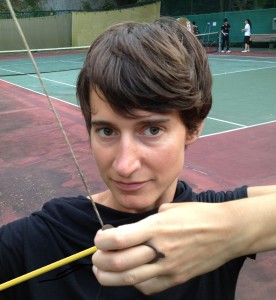Ingrid Hoelzl, Remi Marie
GOOGLE STREET VIEW / Navigating the Operative Image
On our computers, laptops, tablets and smartphones, image as the termination (fixation) of meaning gives way to image as a network terminal (screen). The image is no longer a (political and iconic representation), it is not only an interface, but plays an active role in synchronic data exchanges, and becomes what Harun Farocki has called an “operative image”, an image that no longer represents an object but is part of an
operation” (2004: 17). Our presentation will explore, with Google Street View (GSV), a particular case of the “operative image”. When used on a mobile device equipped with “location services”, GSV may be used as an urban wayfinding tool that constantly matches what we see on screen with what we see on site. This correlation is enabled by real-time data processing, based on mutual data exchanges between user location,
hardware, software, network and database. The users’ trajectories feeding back into the database initiate in fact what we could call, referring to Paul Virilio (1989), a ‛reverse operativity’ which proves to be the more problematic side of locative media applications such as GSV. It is not only that we are operating the world through Google’s images, it is also and primarily that Google’s images are operating us.
Ingrid Hoelzl is Assistant Professor at the School of Creative Media at City University of Hong Kong. She has published a monograph on the theory of photographic self-portraiture and several catalogue essays and book chapters on contemporary photography and video art. Her articles on the new temporality and status of the image in the context of digital animation, screening, and JPEG compression have a appeared in prestigious peer-reviewed journals such as Photographies, History of Photography, Intermédialités, and Digital Creativity. They are available for download on her academia.edu website. Together with Remi Marie, she is currently finishing a monograph that explores the question of “what is an image today”, following its move from geometry to algorithm, and the convergence of image and data, vision and representation (forthcoming with Amsterdam University Press in May 2014).
